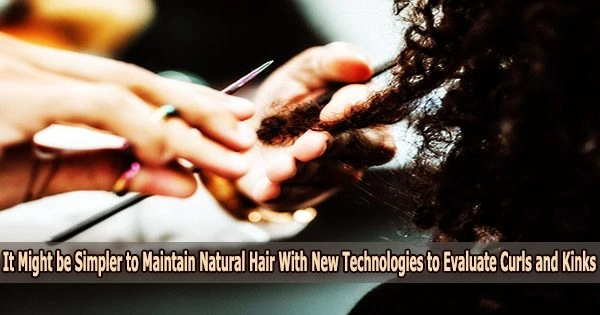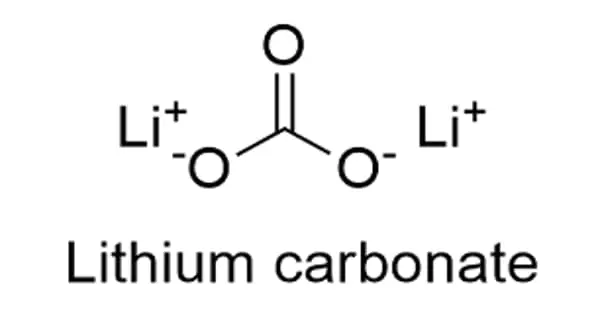There are many and varied haircare alternatives available for black women and other people with curly or kinky hair. There is sometimes conflicting information regarding the best products to use for a certain hair type, and the outcomes might vary greatly.
Now that scientists have identified characteristics like the quantity of coils or curls in a specific length of hair, this confusion is being brought under control so that users may select the ideal product and get consistent results.
The researchers will present their findings today at the spring meeting of the American Chemical Society (ACS). ACS Spring 2023 is a hybrid meeting being held virtually and in-person March 26–30.
“As an African American, I was born with very curly, seemingly unmanageable hair, and other ethnicities can possess similar hair properties,” says Michelle Gaines, Ph.D., the project’s principal investigator.
Gaines used to rely on chemical relaxers to straighten her tresses but stopped when she became pregnant. She was then confronted with an overwhelming variety of products available to style and care for natural hair. Limited guidance about the best options for her particular hair type, and conflicting advice from friends, YouTube videos and other resources, didn’t help the situation.
Clearly, Gaines says, there is a major knowledge gap that needs to be closed, so she has set out to fill it. “As a polymer chemist and materials scientist, I thought it would be great to start a project where I could study the nuances of my hair, because I felt like it wasn’t very well understood,” she says.
Most prior research on properties was done on wavy or straight strands from white or Asian people, according to Gaines, who is at Spelman College, a historically Black college for women. Less is known about what has traditionally been called “African” hair, she says, though researchers at Groote Schuur Hospital and the University of Cape Town in South Africa have published some findings.
L’Oréal, as well as celebrity hair stylist Andre Walker and others, have developed systems to classify different types of hair. Walker’s technique includes tight coils and zig-zag strands with angular bends, falling into the category of kinky.
Although some people think that all of these categorization schemes indicate a preference for a smoother and straighter appearance a bias with historical roots in the preferential treatment of enslaved people with straighter hair and lighter skin they are all meant to assist users in selecting the best haircare products. Gaines felt these systems worked well for straight and wavy hair but lacked the nuance to distinguish the many varieties of curly and kinky hair.
Gaines wanted to see if she could identify differences in properties other than curl shape and tightness, and then use those differences to develop a more precise and quantitative classification system.
Undergraduates at Spelman eagerly lined up to help. Gaines and her student, Imani Page, are collaborating with Alfred Crosby, Ph.D., and Gregory Grason, Ph.D., at the University of Massachusetts Amherst; their expertise includes material property characterization and modeling of complex materials and soft matter.
Using a texture analyzer and a dynamic mechanical analyzer, the researchers determined the mechanical characteristics of hair that was wavy, curly, and kinky. Once a strand is uncurled and then stretched until it breaks, these devices measure force, stress, and other variables.
The researchers recently published results for the “stretch ratio,” a new statistic they established to measure and contrast the effort needed to straighten a curled strand. That ratio was found to be negligible for straight hair (since it can’t be uncurled), about 0.8 for wavy, 1.1 for kinky and 1.4 for curly. This measurement could therefore be used as an indicator of the initial curliness of a sample, providing a quantifiable way to distinguish between these types.
The team also measured geometric properties, such as the diameter, cross section and 3D shape of strands, using optical microscopy, scanning electron microscopy (SEM) and a camera.
In addition, the researchers developed new parameters, including the number of complete waves, curls or coils known as contours that they measured on 3-cm lengths of hair. They found that wavy hair has less than one full contour in that length, curly has about two, and kinky/coily has approximately three or more. The results suggest that people will be able to classify their own hair by counting contours, Gaines says.
In the latest work, Gaines has begun examining the layer that protects the surface of each hair fiber. Known as the cuticle, it consists of flat cells that overlap each other, like roof shingles. Cuticles have a natural tendency to open and close reversibly when exposed to water, shampoo and conditioner.
Yet, persistent cuticle damage from too much acid and moisture retention might leave them permanently raised, exposing the inner cortex of the hair strand. Cuticles that are easily opened and closed and those that are irreversibly elevated increase the strand’s porosity, which increases moisture absorption.
Gaines’ preliminary findings show the cuticle layers are larger and spaced further apart in wavy hair than in curly and coily hair. Also, the cuticle edges are smoother in wavy hair. These findings could help the researchers explain why curly and coily locks dry out faster than wavy and straight tresses.
Gaines anticipates that the team’s results will ultimately define the best criteria for designers to create and for customers to choose the best items for each of the wondrously diverse categories of hair.
















